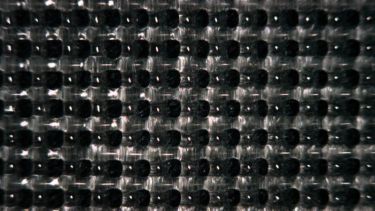Currently, there are only a few such polymers including: Polylactic acid (PLA), polylactic-glycolic acid (PLGA), and Polycaprolactone (PCL). The main issue with PLA and PLGA is that their degradation products are acidic in nature and can hence cause an inflammatory response. They also undergo bulk degradation which results in the sudden loss of structure of the scaffold made using these polymers, as well as not having a large range of mechanical properties.
In addition, there are natural polymers such as fibrin, collagen, chitin, chitosan, and alginate. The two main problems with these natural polymers are the variable properties of the polymers depending on their source and their lack of suitable mechanical properties.
CONTEXT
Natural polymers of bacterial origin such as Polyhydroxyalkanoates (PHAs) are produced using a range of bacteria including Pseudomonas mendocina, Pseudomonas putida, and Bacillus subtilis.
There are many advantages to using the PHAs for biomedical applications including: their biocompatibility, bioresorbability in the human body, huge range of mechanical properties and degradation rates, natural metabolites as degradation products, surface degradation resulting in stable structures, and lack of sudden loss of structure of the scaffold. Also, these polymers are sustainable in nature and their properties are directly controlled by the fermentation process used for their production, resulting in highly repeatable properties.
The RoyLab has used PHAs for hard and soft tissue engineering including cardiac, nerve, skin, bone, cartilage, pancreatic and skin tissue engineering; implant development including nerve guidance conduits and biodegradable drug eluting stents; and controlled drug delivery.
COLLABORATORS
This project involves many collaborators including:
- Professor Sian Harding, Imperial College London
- Professor Molly Stevens, Imperial College London
- Professor John Haycock, The University of Sheffield
- Professor Ruth Cameron, The University of Cambridge
- Professor Mohan Edirisinghe, University College London
- Professor Richard Oreffo, The University of Southampton
Industrial collaborators include: Lucideon Ltd, Vornia Ltd, and Bioinicia.
UNDERPINNING RESEARCH
This project is based on the production of natural polymers using a range of different bacteria with focus on their use in tissue engineering, organ replacement, implant production, and controlled drug delivery.
EQUIPMENT & FACILITIES
The production of these natural polymers require large scale fermenters and the 30L Diamond Pilot Plant at The University of Sheffield has been used for the production of these polymers. These are then isolated and purified in the RoyLab located in the Kroto Research Institute. The Royce Discovery Centre, in collaboration with Royce at the University of Sheffield, will house the imaging and processing facilities to be used in this project.
RESULTS & OUTPUTS
The project has allowed the repeatable production of the natural polymers in reasonably large quantities which have then been successfully used for the production of:
- Cardiac patches for the repair of a heart post myocardial infarction
- Nerve guidance conduits for peripheral nerve repair
- Bone tissue substitutes
- Cartilage replacement
- Biodegradable drug eluting stents
- Wound healing patches
- 3D disease models for cancer
- Controlled drug delivery constructs in the form of microspheres and bioartficial pancreas.
IMPACT PATHWAYS
This project has a huge potential for the development of novel biomedical materials that are of natural origin and can be produced in a sustainable manner.
These novel materials can ultimately lead to the development of hard and soft tissue replacements, medical implants such as stents and nerve guidance conduits, improving the health conditions of millions of patients, especially in the current ageing population. These novel medical products could be used in the clinic in the near future.

